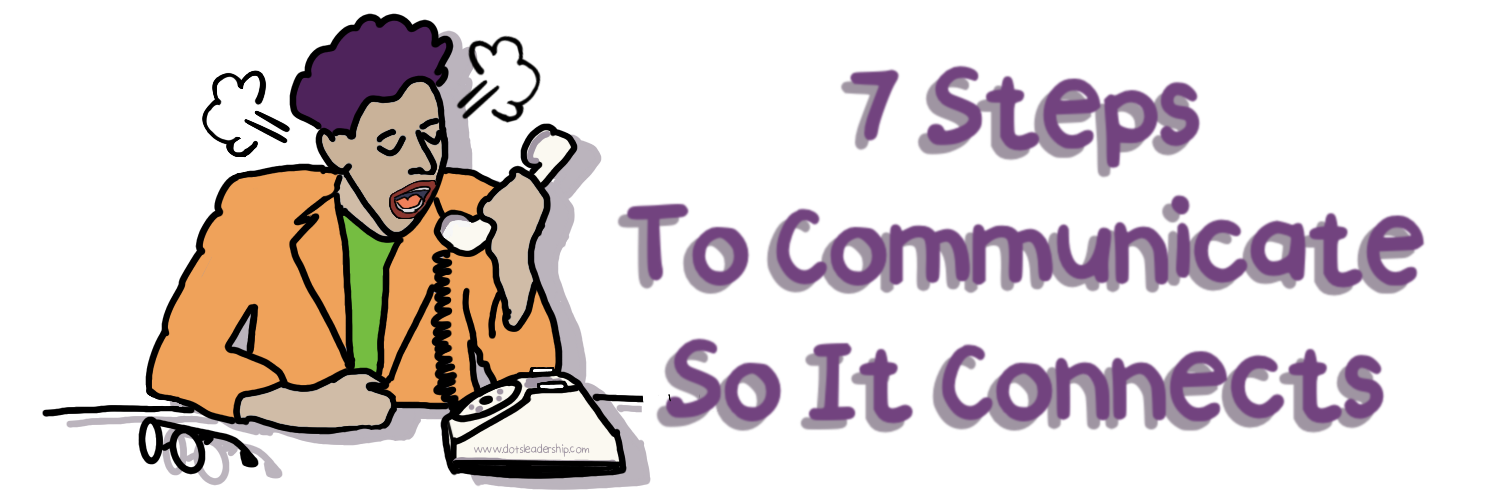Poor Communication = No ConnectionThese days, with all the tools we have available, we are far more connected and capable of staying in touch than ever before! So don’t you find it a bit ironic that in today’s workplaces, lack of communication remains one of the biggest issues for employees? Regardless of the industry or size of company! Here’s the thing - if your team doesn’t feel heard, they don’t understand the direction of the company, never get constructive feedback, or they don’t think you care about them as a person, then why would they give you their best work? Every one of those ‘misses’ can be remedied simply by taking steps to form a better connection with your team.
It’s More Than Words Communication, when it does occur, may be missing the mark altogether! Between abbreviated texts and messaging, overwhelming volume of email or the ever brief, on-the-fly meetings these days, communication and connection is deteriorating, especially at work. To further complicate our ability to communicate is the fact that most of us hear (absorb) less than 10% of what is actually spoken! According to the Mehrabian Theory we attribute more meaning of a message through body language, facial expression, tone and pace of the conversation than that of the actual words voiced – hence why texts, messages, email and even phone messages can be misconstrued! So ask yourself - how likely is it that YOU are communicating most effectively for your message to be received the way you intend it? Using the scenario below, I’ll demonstrate my 7-step method to build rapport so you can improve every interaction! Scenario - Disconnected Team Team members, who report to your managers, have told you they feel disconnected lately. They claim that most one-on-one meetings with their manager(s) are being cancelled, and when they do happen it’s a quick download of one-way directives of what to get done, versus real conversation. As a result, they feel excluded in the overall success of the department and don’t see the opportunity to learn, grow or develop. You sense a few are looking to leave the group or worse, the company. You believe manager’s (on your team) need to involve their teams in problem solving vs giving orders and begin having development-focused one-on-one’s with each person (at all levels), at least once a quarter to rebuild a positive workplace. What Not to Do Even though it may seem the quickest ways, please don’t just call a meeting of your direct reports to tell them to start having one on one meetings focusing on development. Just like their team members, they too will tune out being given a directive and may even take it out on their teams for speaking up, further complicating the problem. 7 Step Method For Communicating To Connect While these steps may seem lengthy, it actually takes only a couple of minutes to practice and tailor to your circumstance. Here are the steps:
1. Prepare - consider your audience and check yourself. Think about what is important to you and why, and how might they view it?
2. Create a ‘safe’ environment – remember to praise in public, criticize in private
3. Lead with open-ended questions – question for clarity about their view of the situation and gather their input
4. Meet them ‘where they are at’, before diving in – use their viewpoint to build on. Put yourself in their shoes to show you’ve heard them (it also demonstrates empathy)
5. Take time to establish a personal connection – consider the challenges they speak about and build rapport by showing you understand how they feel, validate their perspective (this is not a feedback sandwich)
6. When delivering candid feedback, be tough, not mean – show that you genuinely care about them as a person and expect a change to occur
7. Be clear, direct and provide specifics
Remember: Its All About Them The same steps will work for any topic, particularly powerful for sensitive issues; the key is paying close attention, hearing their perspective, demonstrating you want their success and being clear about the outcomes that are needed. Communication serves as the foundation for a positive employee experience for all of us. As a leader when you demonstrate support both through your words AND non-verbal interaction, your team will feel more valued and heard. Taking time to get to know others and developing an understanding of their communication styles provides a platform to connect on a more personal level. This also creates stronger, more cohesive working relationships where difficult subjects can be discussed and dealt with efficiently. Help Is Available To gather insights on your team’s communication styles there are a variety of tools available (ie assessments, questioning techniques) feel free to reach out if you need help to find the right approach to connect and communicate in your workplace.
0 Comments
Your comment will be posted after it is approved.
Leave a Reply. |
Most Popular Posts:
AuthorElaine Adamson is a leadership consultant with Dots Leadership Solutions Inc. A natural dot connector. Passionate about coaching team effectiveness and leadership development she shares over 25+ years of real-life tips and tricks that really work! 
Elaine believes you can discover and leverage strengths to forge a strong team dynamic despite business challenges or organizational change.
She posts some great articles on Linked In too! Topics of Interest
All
Archives By Date
November 2022
|
Specialties |
Company |
|


 RSS Feed
RSS Feed